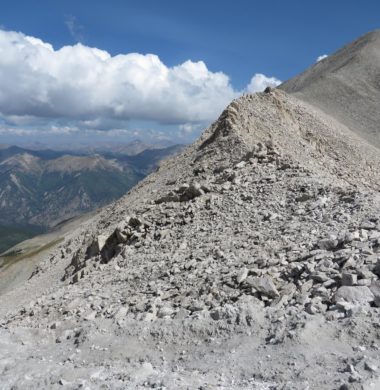Tips for Climbing a 14er – High Altitude Fitness!

Colorado is famous for its mountains above all else. While there are many great ways to enjoy Colorado’s peaks including leisurely strolls, camping, skiing, and scenic drives, one of the most exciting and adventurous ways to enjoy Colorado’s beautiful mountains is by climbing them. Colorado has 58 peaks over 14,000 feet high and there are more than 140 different hiking routes. Climbing a 14er is a quintessentially Colorado outdoor activity, and a great fitness goal! Here are some tips for climbing a 14er!
Choose Wisely
Not all 14ers are created equal. There are some difficult 14ers that require technical equipment or may not have clearly marked trails. Avoid these trickier climbs if you’re a novice climber. Luckily, there are 17 trails that seem almost intended for beginners. They are typically a smooth hike to the summit and do not require any technical expertise. Check out these mountains if it’s your first time trying a 14er: Mt. Lincoln, San Luis Peak, Mt. Cameron (technically not a 14er due to geographical discrepancies, but does stand at over 14,000 feet high), Mt. Democrat, Mt. Bross (located on private property so use caution), Huron Peak, Mt. Elbert (actually the highest 14er at 14,433 feet but an easy climb nonetheless!), Mt. Bierstadt, Quandary Peak, Handles Peak, Mt. Massive, Mt. Antero, Culebra Peak, Torrey’s Peak and Gray’s Peak (can be done together!), Mt. Sherman, and Pike’s Peak (you can drive almost all the way to the top and then it’s just a short walk). Check the “class” of a mountain before you go to know the difficulty level. All are rated on a 1-5 scale, 1 being the easiest and 5 being the hardest. Classes 1 and 2 are considered hiking routes that do not require any technical expertise. Stick to these levels if you’re less experienced. Class 3 indicates that “scrambling” may be required and that the terrain may be rocky and less maintained than on hiking routes. Classes 4 and 5 indicate that serious climbing and technical equipment may be required.
Start Early
When it comes to 14ers, the earlier, the better. Not only will the views be crisper and more magnificent, but you will reduce your chances of getting caught in an afternoon thunderstorm or hail smattering. To play it safe, try to be starting your hike before 6 and 8 am. This may require leaving your house between 4 and 6 am if you have a drive to the trailhead, but it’s worth it.
Pack the Essentials
Don’t leave unprepared. Pack ample water, snacks, a compass and a map, a fully charged cell phone, and sunscreen for those high altitude rays. Also be sure to wear layers because it may be cool at the start of the hike or blustery at the top.
Stay Safe
If you are starting to feel the signs of acute mountain sickness (AMS), go down immediately. Some panting on a strenuous hike at altitude is normal, but if you feel seriously short of breath, dizzy, nauseated, or have a severe headache, head to lower elevation. In severe cases of AMS, fluid can build in the lungs or brain, leading to serious medical complications. If you aren’t feeling well, descend right away. To avoid AMS, stay hydrated and do not ascend too quickly. Make sure you are well-rested, prepared, hydrated, and physically fit before attempting a 14er. Stick to the standard route and never hike alone, especially as a beginner. Go with trusted friends and listen to your bodies on the hike. In addition, stay safe by paying close attention to the weather. Afternoon storms can hit earlier than expected, so if you see ominous clouds or feel rain, turn back. It’s always better to be safe.
Enjoy the View
Despite the many warnings associated with climbing a 14er, don’t forget that the experience should be enjoyable and beautiful. Many unique wildflowers can be spotted on 14er trails, and the views on the way up and at the top are often breathtaking. Make sure to take a look around.
Now get hiking!
How to Use this Information
Hiking and keeping fit are great ways to keep you heart healthy. Obviously, you should consult with your doctor if you have any heart issues and plan on taking on a 14er. But, we always encourage staying healthy and fit, but also want you to be prepared. If you have any questions about your cardiovascular health, talk to the experts at South Denver Cardiology. Call 303-744-1065, or visit our website and schedule an appointment!
- Does Vaping Increase Your Risk of Heart Disease? - July 7, 2025
- Lifestyle Factors That Increase Your Risk of Heart Disease - May 26, 2025
- 6 Tips for Exercising Outdoors with a Heart Condition - May 19, 2025
Sign Up
As with any health concerns, your specific treatment program should be discussed thoroughly with your primary care physician as well as any specialists who may need to be consulted – like a cardiologist.
Sign Up
